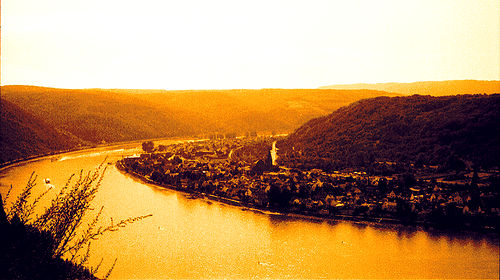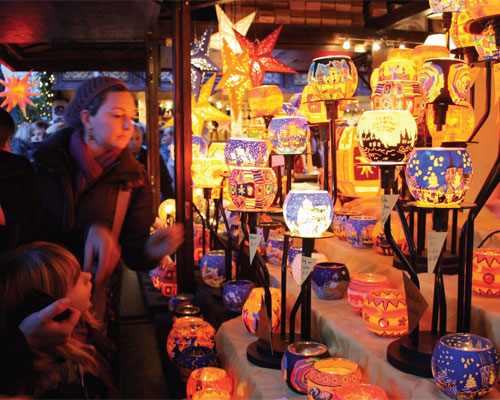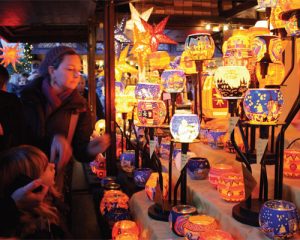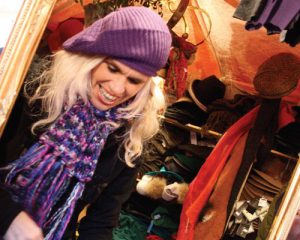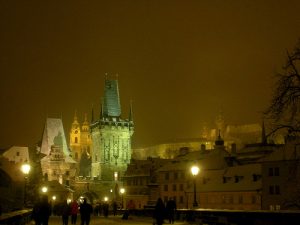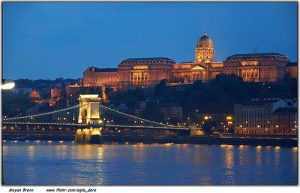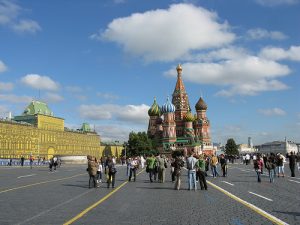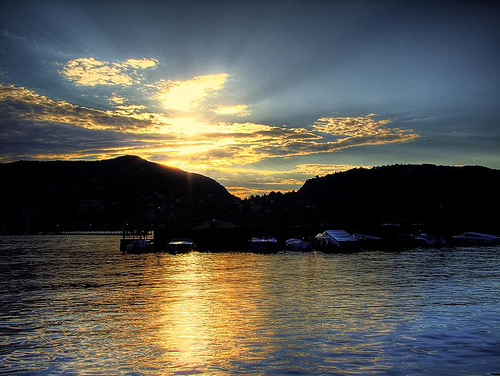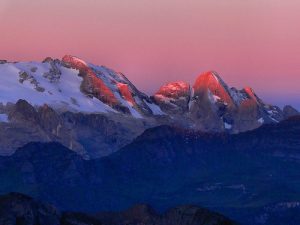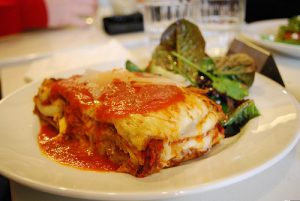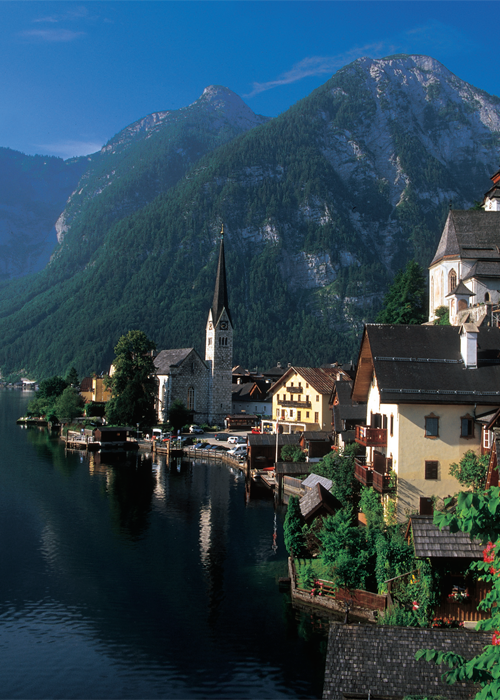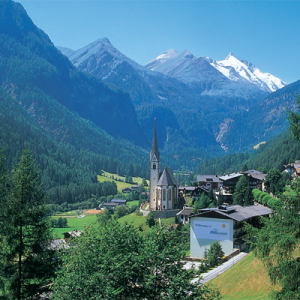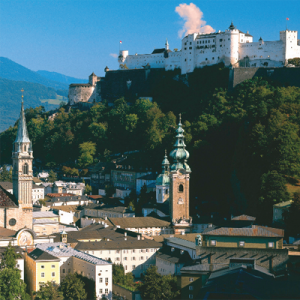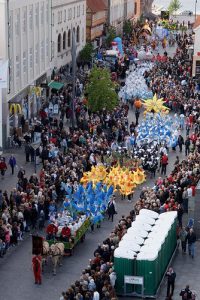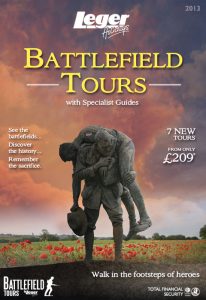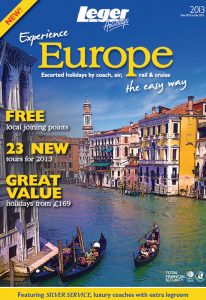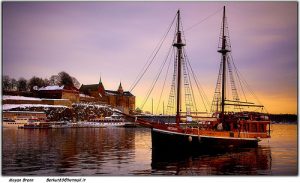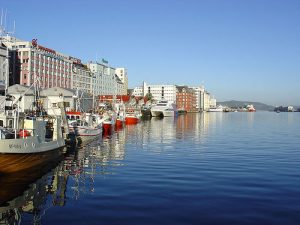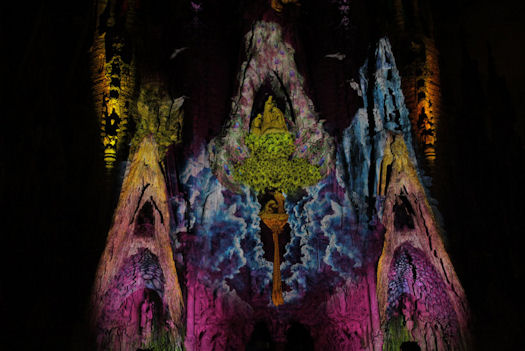The River Rhine is arguably one of Europe’s most beautiful waterways and because of this it has captivated visitors for over 200 years.
It is like something straight out of a picture book – medieval castles perched on virtually every hilltop, pretty villages lining the river banks, quaint half timbered buildings, precipitous cliffs and lush vine clad slopes.
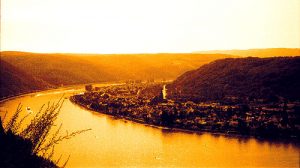
The Rhine has more castles along its length than any other river in the world and they are seen as such a characteristic feature of the river landscape. The castles were built in the Middle Ages by powerful rulers, on hilltops and in the lowlands as moated castles, to protect estates and their inhabitants. Therefore they were seen as purely defensive structures. However it cannot be denied that some are rather breathtaking and many visitors today see them as objects of mystery, splendour and romanticism.
A well known focal point along the Rhine, on the Eastern side, is The Lorelei (also spelt Loreley). It is a rock which soars some 120 metres above the waterline and marks the narrowest part of the river between Switzerland and the North Sea.
Lorelei is also the name of one of the beautiful Rhine maidens who, according to legend, sat upon the rock and lured passing navigators to their doom with her alluring singing, much like the Sirens of ancient Greek myth. A bronze statue of Lorelei overlooks the river. Thanks to its favourable geological location, the Rhine Valley is covered in vineyards, which were originally planted by the Romans.
During the day the sun warms the grapes on the vines and in the evening the golden wines sparkle in the glass. There isn’t a royal house in Europe at whose table these wonderful wines have not been served. Imagine sitting on top deck of your cruise ship, cruising along the Rhine Gorge with a chilled glass of wine in hand, or sitting outside one of the river side cafes in a pretty Rhine town and sampling one or two of the different varieties.
The scenery along the Rhine is the stuff of dreams, and places like, Koblenz, Rudesheim, Boppard and Cologne epitomise the wonder and charm of this remarkable area.
Cochem is a village along the River Moselle, just off the Rhine, and is dominated by the late-Gothic imperial castle, as well as being dotted with medieval squares and lovingly restored timber-framed houses. The castle is 1,000 years old and stands more than 100 metres above the River.
Other places of interest in Cochem are the historical mustard mill (Senfmühle) built around 1810 (the last one of its kind in Europe), the market square and the well preserved sections of old town walls.
On the famous Deutsches Eck (German Corner), where the Rhine and Moselle rivers meet, stands Koblenz. The town is set amidst four ranges of hills, and two thirds of the surrounding countryside consists of woods, open green spaces and water.
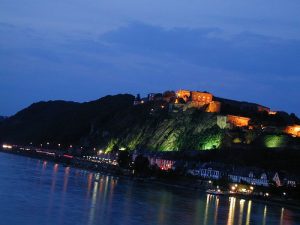
Koblenz is a ‘small city’ with much to offer and just a quick stroll around the town highlights it’s appeal – the romantic narrow streets and historical squares, picturesque alleyways in the old quarter with the Romanesque Basilica of St. Kastor, plus the Ehrenbreitstein fortress, set high above the baroque town and one of the largest castles in Europe.
Not far from Koblenz is Boppard, which was once a Roman fort, and is seen as the heart and sole of this tourist area. The finest of wines originate here on the slopes of Bopparder Hamm, the largest loop of the Rhine. The wine is world-class and this is because of the fantastic location of the vineyard slopes, which are south facing, but also due to the many
hundreds of years of accumulated knowledge and experience passed down through generations of local wine producers.
A little further down river is Rüdesheim and one well known attraction is the Drosselgasse. This narrow street, just 144 metres long, is in the heart of Rüdesheim’s old town and attracts visitors from every continent. Live music, singing and dancing can be enjoyed in its wine taverns and gardens, which are open daily from late morning to the early hours.
Another place of interest is the Niederwald Monument, which commemorates the reestablishment of the German empire following the Franco- Prussian War of 1870/71.
The main figure is Germania, holding the imperial crown in her raised right hand and the imperial sword in her left hand. There is a marvellous view from the monument far into the countryside.
Cologne is at the top of the river and is renowned for its churches. You’ll find a unique ensemble of twelve large Romanesque collegiate and abbey churches, all true gems of medieval architecture, packed into a compact area within the medieval city walls.
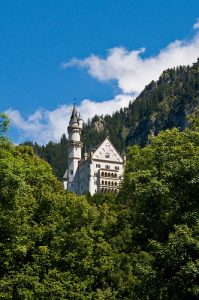
The city is also know for its cathedral, which is the largest in Germany and a designated UNESCO World Heritage site. Around Christmas time the imposing cathedral is lit up, whilst stalls selling traditional German crafts and food dominate the square below.
Did you know…
There are more than 150 castles in Germany. Some are still inhabited by aristocratic families, others have been transformed into hotels and restaurants, and some are in ruins.
The Berlin Wall was 103 miles long and 12 foot high. It was constructed in 1961 to provide a physical barrier between East and West Berlin, as the city had been divided into a Soviet occupational zone and a joint U.S., France, and Great Britain occupational zone after World War II, with each zone being governed by the country(ies) controlling it.
Brandenburg Gate is one of the most famous landmarks in Berlin. During the Cold War it stood in the land of nobody, in the middle of a restricted area next to the Berlin Wall and it was the symbol of division of the city into West and East.
It took more than 632 years (from 1248 to 1880) to build Germany’s most popular tourist attraction, the Cologne Cathedral.
You would have to try one kind of German bread per day for almost a whole year in order to be able to taste them all as there are over 300 different kinds of bread in Germany.
There are over 1,500 types of sausages, such as Frankfurters (mild), Nuremberg (which are served barbequed) and Bavaria sausages (white).
Germans really do love beer and rank second in world-wide beer consumption per person after Ireland. Beer is officially considered a food in Bayern, where the normal size beer glass is 1 litre. Germany is the cheapest place in Europe to buy beer, but also the most difficult in which to make a choice as there are over 1,500 different brands and types of beer in the country.
Dogs are kings in Germany and can go just about everywhere including restaurants, public transport and shops. They even have their own pools.
Germany is the home of the world-famous garden-gnome. In the mid 1800s, the first garden gnomes were made in Thuringia, Germany. They have spread via central and northern Europe as far as America and Australia and have admirers in all four corners of the world.
The first cuckoo clock was made in Germany in the early 17th century and the world’s largest cuckoo clock (as reported in the Guiness Book of records) can be seen in the small Black Forest town of Schönach.
Images courtesy of flickr users: Michal Osmenda, Dittmeyer, Fugue.

